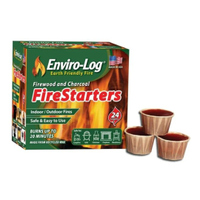How to start a fire in a fireplace – wood stacking tips and ignition tricks
These simple fireplace hacks make lighting any fire simpler – for a cozy warm glow without any effort
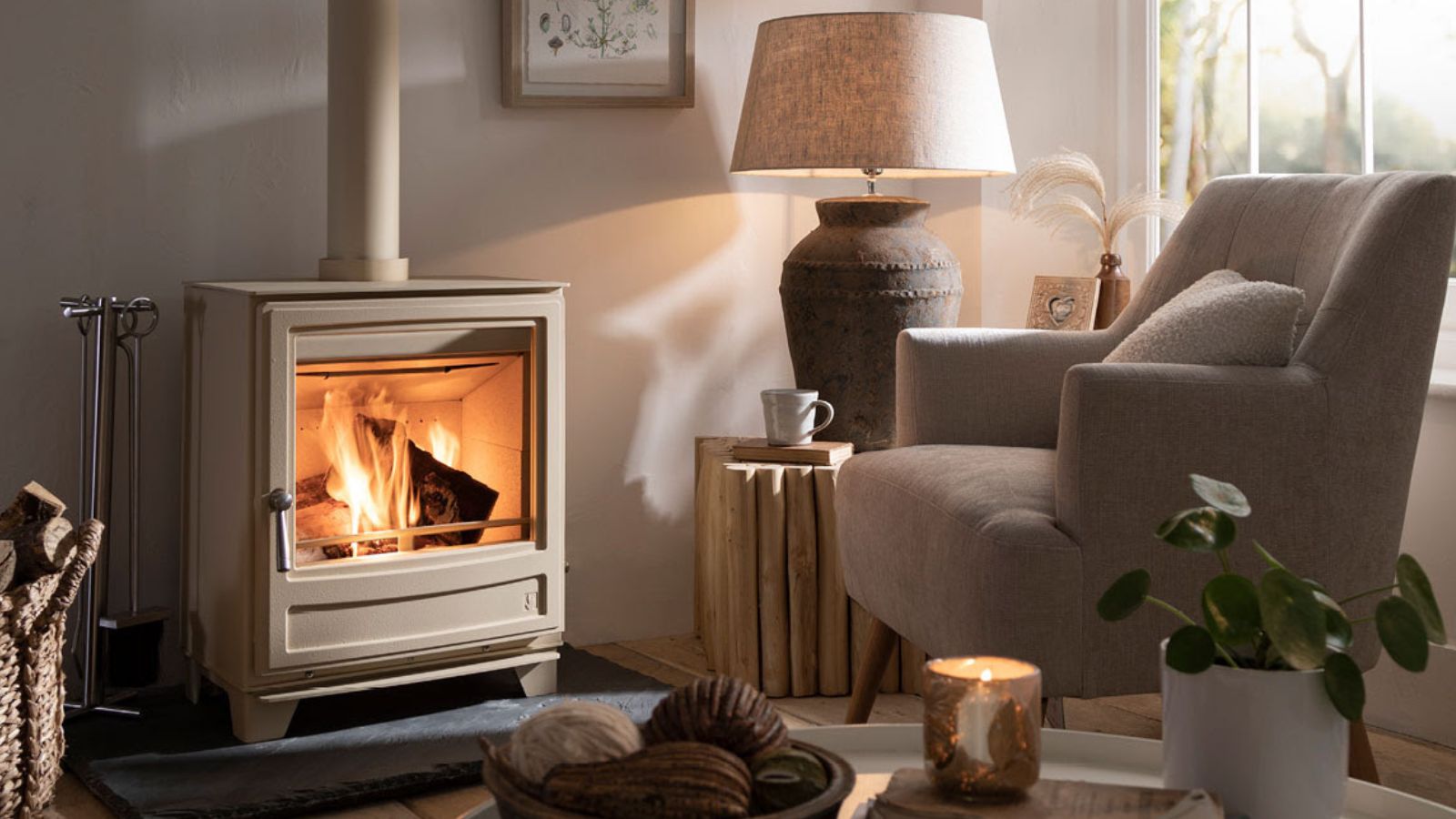

There is nothing more comforting in winter than a roaring log fire heating your home, but it is easily ruined by blowback and dying embers when you add logs a little too quickly. So how do you start a fire in a fireplace?
From the type of logs you use to the setup of your fireplace, there are a lot of factors that can affect how your fire burns once you ignite it.
These are the four things you need to consider to start a fire in a fireplace, and why each step is so important to the perfect burn.
How to start a fire in a fireplace
Before starting a fire in your fireplace, it is important to prep your chimney for winter to ensure that it is free from blockages and no damage could be made worse by heat and smoke. Having it serviced and cleaned is best done by a professional to ensure that your home is safe.
With that out of the way, it is time to ignite your fire.
How to stack wood in a fireplace
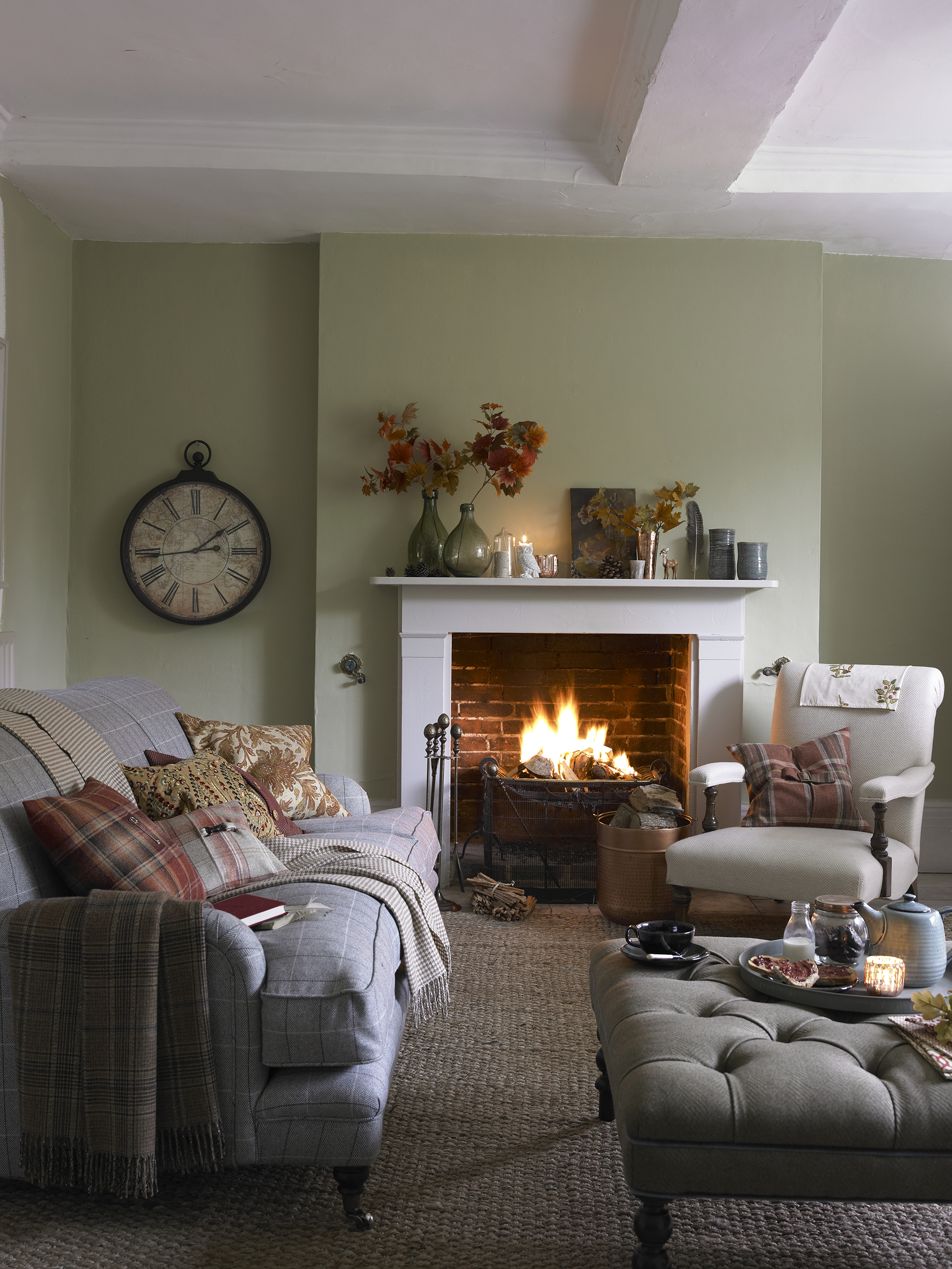
According to Richard Fewings, fireplace expert at Glowing Embers, there are two main ways you can stack firewood in wood burners:
The upside-down method
If you are new to starting fires in fireplaces, the upside method is a great way to quickly light a fire without the risk of accidentally smothering it before it gets going, Richard explains.
‘To almost guarantee your fire gets going no matter the conditions, literally turn the traditional method on its head. The key to getting a successful fire going in a modern closed heating appliance is to establish the draw as quickly as possible. The draw is established by warming the air within the flue system, so it makes sense to focus on this.
‘First, place a larger log with a flat or level surface on the base of your stove (always keeping a small layer of ash underneath). Then, create a grid or hashtag of kindling on this log – three front to back with three left to right on top (a little like a Jenga tower). There should be gaps in your grid to place firelighters. Once lit, the fire will transfer into the kindling and burn down to the log beneath, and once established, you can gradually increase your log size.'
The same method is used to control an ongoing wood fire: close down the primary air and operate using the secondary air.
The traditional method
If you are more confident at starting a log fire, then the traditional method is a great alternative if you want to add firewood to your fire gradually to control the heat and burn time, Richard continues.
‘The go-to method for starting any fire is to start small and grow your fuel bed with the fire. Using newspaper and/or firelighters beneath small strips of kindling (I find a pyramid of kindling is the most satisfying visually), get a small fire started. Eventually, the small amount of heat emitted will warm the flue sufficiently that the fire will establish, and you can slowly increase the amount of wood added.
‘When happy, slowly close the stove door and reduce the primary air. The fire will dampen at first as you are reducing the oxygen feeding into it, but with sufficient draw, it shall re-establish. Use the secondary air control to regulate the ongoing burn rate for wood.’
The best way to ignite a fireplace
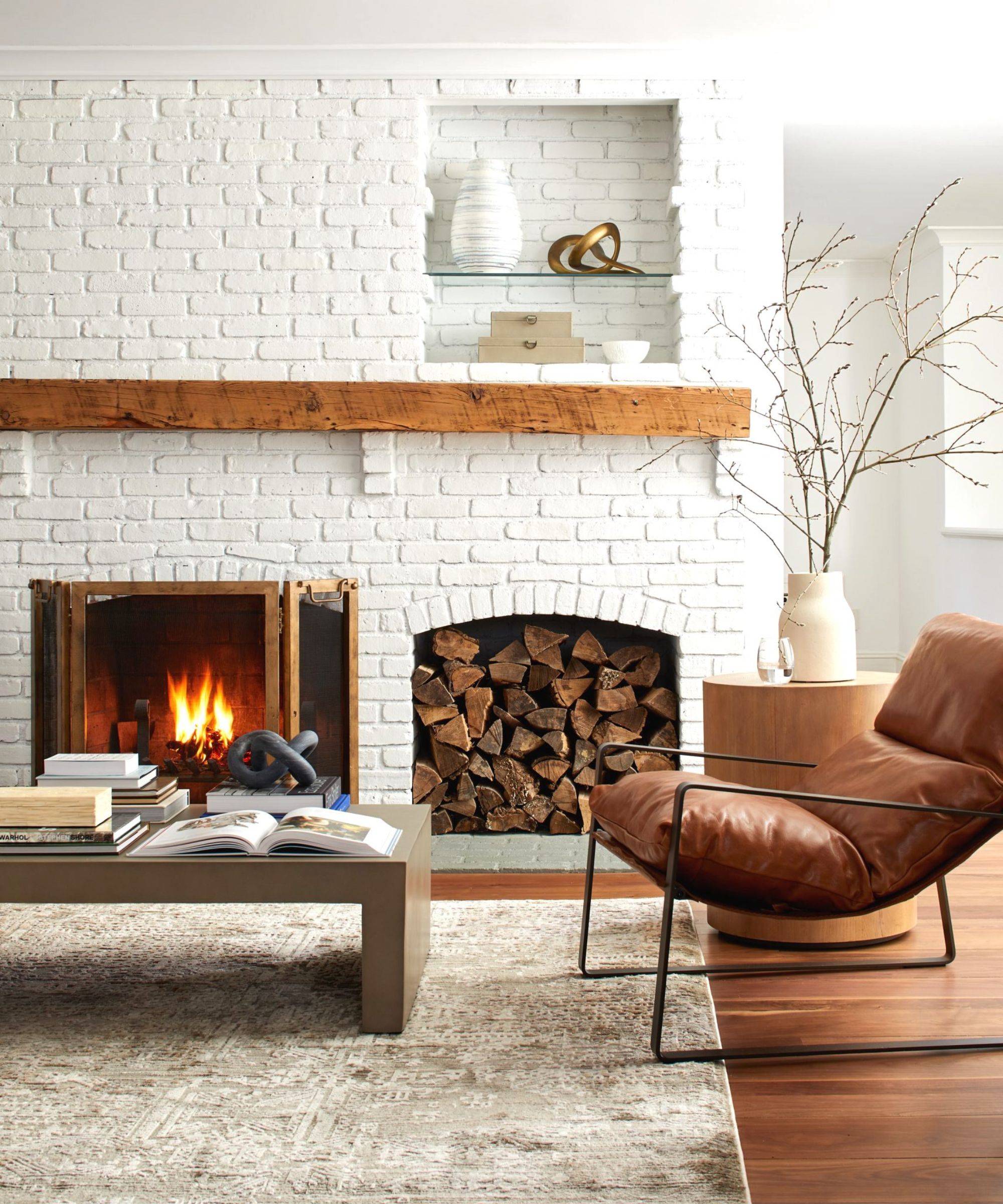
When starting your fire, there are several items you can use to get the fire going. From kindling to newspapers or commercial firelighters, there is no right or wrong way to do this – it simply comes down to preference.
‘To start a fire in a fireplace, I always start with smaller pieces of wood called kindling,' says Jason Hitchcock, founder of Survival Stoic. 'These small pieces are leftover from my firewood pile or odd-shaped pieces that don't stack well. They should be less than one inch in diameter or so. Most importantly, the kindling should be dry. The more surface area, the better, so cutting shavings that stay attached helps to get the fire going quicker.’

Jason started Survival Stoic after a EF4 tornado destroyed his neighbourhood and wanted to share his tips and tricks to help people stay safe in extreme situations. He has an engineering degree, a problem-solving background, and has enjoyed being an outdoorsman for over 45 years.
Jason also uses paper on occasion, often using scrap newspapers or junk mail that comes through his mailbox to help get the kindling going while also getting rid of paper clutter. Using paper and kindling is often seen as the most eco-friendly way of starting your fire.
Fire starters, fire plugs, or fire logs are commercial alternatives that are guaranteed to burn hot quickly to ensure your fire takes no matter how you stack your wood. These can be costly, though, and be more damaging to the environment, so these are sometimes best left for emergencies. For instance, Jason keeps them in his camping kit.
The best wood to use in a fireplace
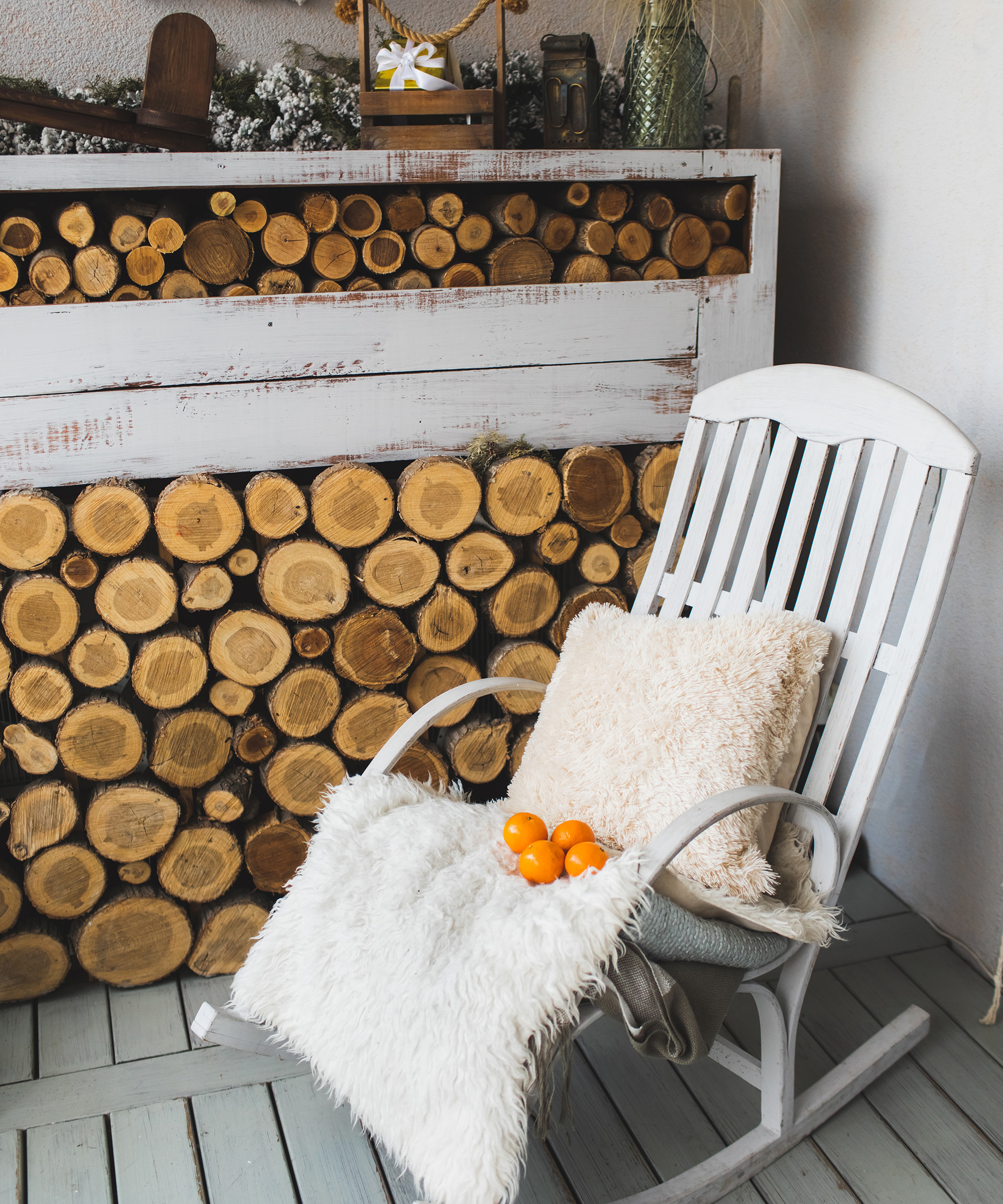
The type of firewood you use is essential to ensuring your fire burns well and cleanly. Survival expert, Jason Hitchcock, says that the best wood for a home fireplace is dry hardwood:
‘Wood like Oak, Hickory, and Poplar work best,’ he begins. ‘I like to use hardwood that was cut at least one year ago as it gives it time to dry out. Wet wood will smoke more and not burn as hot. I never use softwoods like Pines or Firs. These will smoke more and have resin that tends to make a mess in my fireplace.’
Avoid the most common firewood storage mistakes by keeping your logs in good, dry condition and your log store free from pests before use.
Why your flue matters
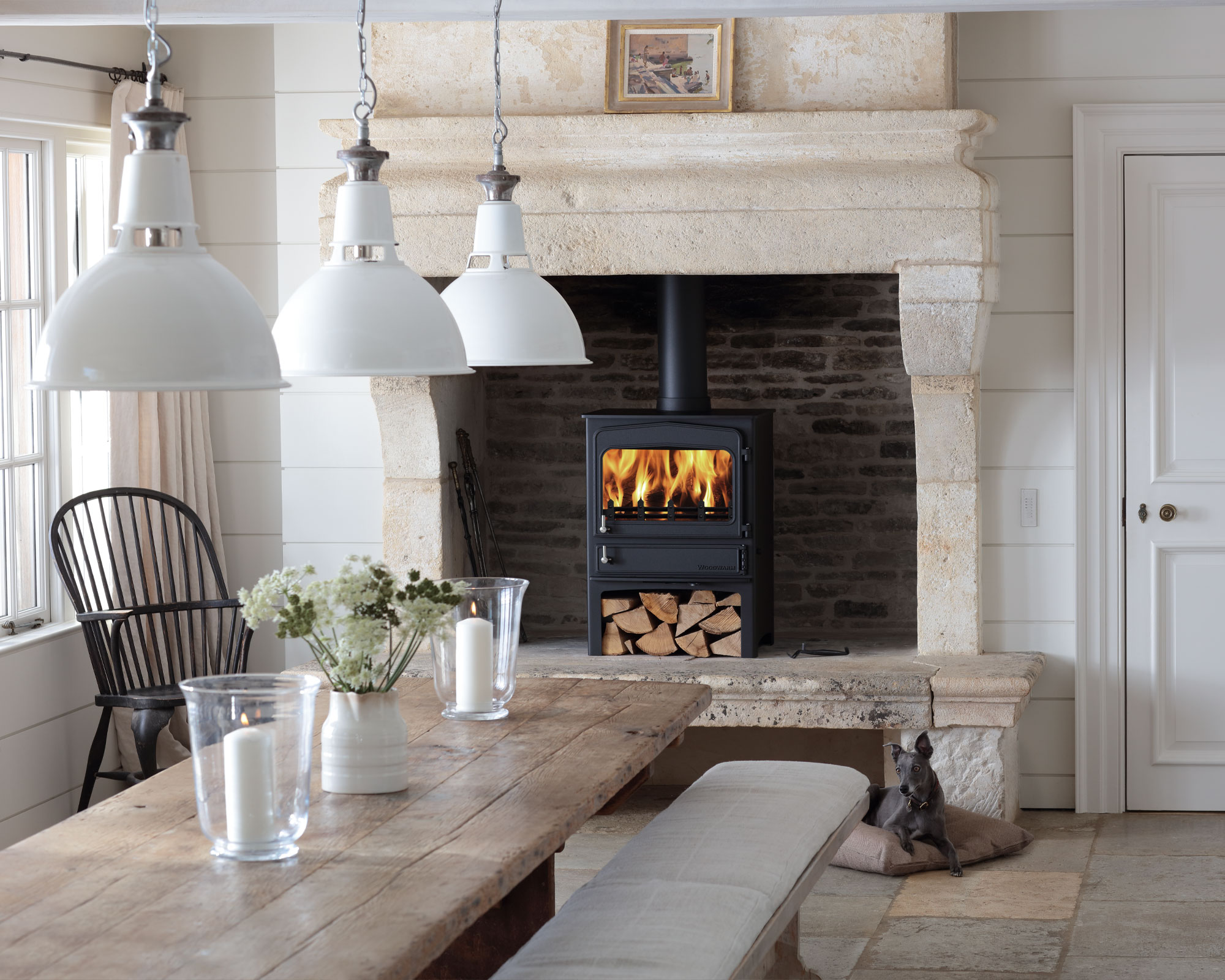
'Your flue (or chimney) is not just for redirecting smoke away from your home. It plays an essential role in how your log fire burns,' says Richard Fewings, fireplace expert. The height of your flue and the size of your fireplace work together in tandem to establish a good draw, encouraging smoke up and out of your fireplace, rather than it blowing out into your living room every time you open the door to add another log.
Richard recommends having a flue of at least four and a half meters to ensure that there is enough difference in air pressure between the top and bottom of the stove for a draw to happen:
‘This works because in physics substances always want to reach a point of equilibrium and where there is dis-equilibrium (i.e. there is a lower air pressure at the top of the flue than the bottom) air will be drawn up the flue to try to equal this. Once the chimney is warm the rising hot air will provide a more powerful draft.'

‘The trick when lighting a fire is to ensure that a) your flue is the correct height to provide any initial draw and b) heat the air in the flue system up as quickly as possible to benefit from the strengthened draught that this will provide.
Flues should also be an appropriate diameter for the stove, which is why a flue liner is recommended for use in a chimney – this reduces the volume of air that has to be heated to create an updraught and, therefore, makes lighting the stove much easier.
As such, along with knowing how often to clean your chimney to keep it free from blockages, it is a good idea to have a trusted expert help you pick out the right size stove and flue and fit it into your home to ensure that everything will work from the get-go, and you won't need further expensive replacement works later down the line.
FAQs
Why won’t my fire start in my fireplace?
If your fire keeps going out in your fireplace, it may be starved of oxygen. First, check that your chimney damper is open (especially if there is significant blowback). If it is, consider when the clue and chimney were last cleaned – it may be that they have a blockage that needs to be removed by a professional. Having a service of your burner and your chimney will also rule out other structural issues that could be causing your fire to extinguish prematurely.
How do I know if my chimney flue is blocked?
There are a few things you may notice if your chimney flue is blocked. First of all, smoke from your fireplace will be blowing back into your home, and your smoke detector or CO2 monitor may be going off when you light a fire. Your fire may also burn out more quickly or not ignite at all as it is starved of oxygen and smothered by its smoke. If this is the case, it is important to stop using your fireplace until it has been cleaned and serviced by a professional.
When using a log-burning stove in your home, it is important to prioritize safety. This means cleaning your flue and fireplace regularly to prevent a build-up of flammable soot and being careful when styling a mantlepiece to ensure that nothing overhangs that could set on fire or be melted from the heat.
Sign up to the Homes & Gardens newsletter
Design expertise in your inbox – from inspiring decorating ideas and beautiful celebrity homes to practical gardening advice and shopping round-ups.

Chiana has been at Homes & Gardens for two years and is our resident 'queen' of non-toxic living. She spends most of her time producing content for the Solved section of the website, helping readers get the most out of their homes through clever decluttering, cleaning, and tidying tips. She was named one of Fixr's top home improvement journalists in 2024.
-
 Extend the lifespan of your appliance with 5 simple but crucial washing machine maintenance tips
Extend the lifespan of your appliance with 5 simple but crucial washing machine maintenance tipsFrom cleaning the filters to keeping the door open, experts reveal the washer tips they swear by
By Andy van Terheyden Published
-
 These are the 6 must-have colors to decorate with in April 2025
These are the 6 must-have colors to decorate with in April 2025What do retro-inspired yellows and beautiful blues all have in common? They're on our hot list for the season ahead
By Sophia Pouget de St Victor Published
